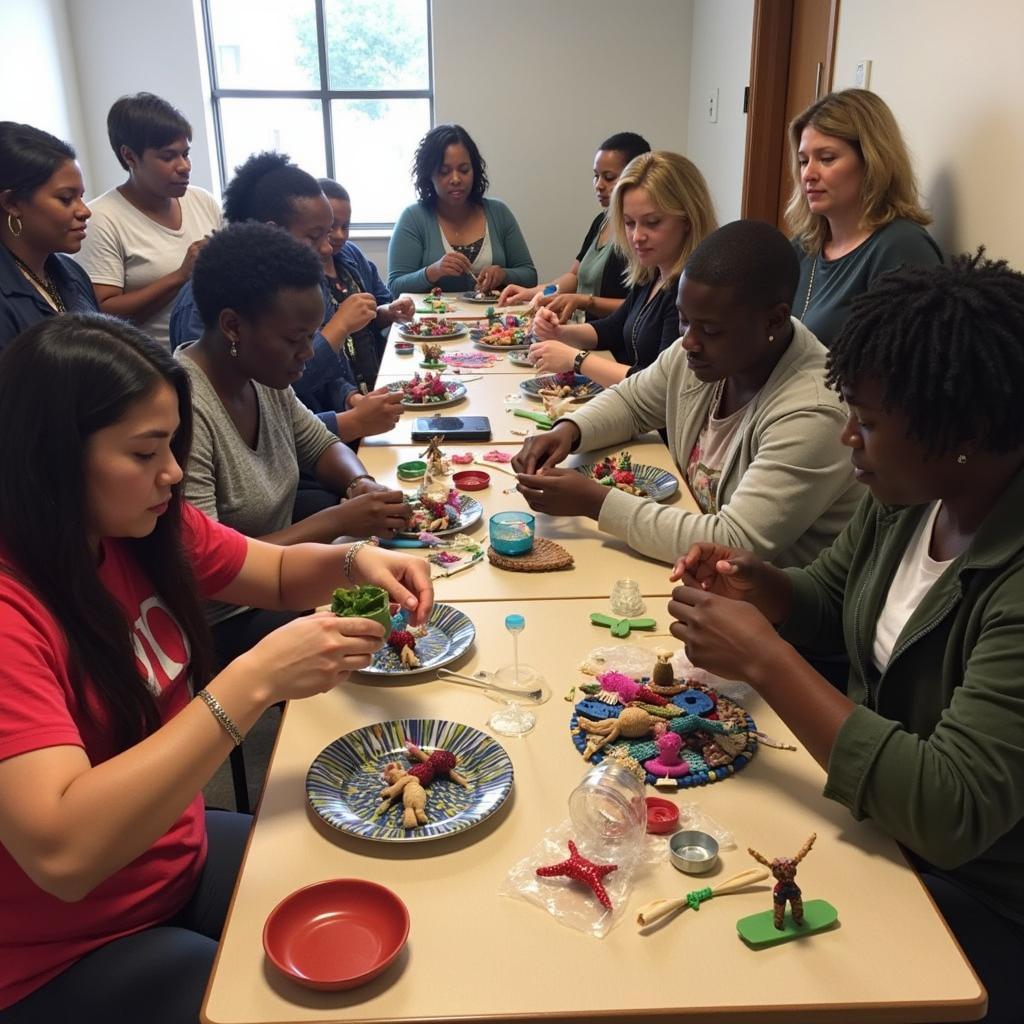Creating African Dolls with Recycled Materials
African dolls, rich in cultural significance and handcrafted beauty, have been treasured for generations. While traditional materials like wood and clay hold a special place, there’s a growing movement to create these dolls using recycled and waste materials. This eco-conscious approach not only promotes sustainability but also adds a unique charm and narrative to each doll.
The Art of Upcycling: Giving New Life to Waste
Upcycling, the art of transforming discarded materials into something of higher value, is at the heart of creating dolls from waste. It’s a creative way to address environmental concerns while celebrating resourcefulness and ingenuity. Materials that often end up in landfills are given a new purpose, transformed into beautiful representations of African culture.
Common Waste Materials Used for Doll Making
The possibilities are endless when it comes to upcycling for doll making. Some commonly used waste materials include:
- Plastic Bottles: These can be cut, shaped, and layered to form the doll’s body, head, and limbs.
- Fabric Scraps: Leftover fabrics from tailoring or old clothes can be used to create vibrant and textured clothing for the dolls.
- Bottle Caps: Colorful bottle caps can be strung together to make necklaces, earrings, and decorative elements for the doll’s attire.
- Newspaper and Magazines: Paper can be rolled, braided, or woven to create the doll’s hair, accessories, or even the body itself.
- Cardboard: Sturdy cardboard boxes can be used as the base for the doll’s structure, providing support and shape.
The Cultural Significance of African Dolls
Dolls in Africa are more than just playthings. They often hold deep cultural and spiritual significance. They can represent ancestors, deities, or symbolize important life events and traditions. By using recycled materials, these dolls gain an additional layer of meaning, representing a connection to the earth and a commitment to preserving cultural heritage in a sustainable way.
Getting Started with Your Own Recycled Doll
Creating an African doll from recycled materials is a rewarding and creative process. You can find inspiration from online tutorials, books, or even by observing traditional African dolls. Start by collecting materials you find around your home and let your imagination guide you.
Here are some basic steps to get you started:
- Design and Structure: Sketch out your doll’s design, considering its size, shape, and clothing. Decide on the base material for the body (plastic bottle, cardboard, etc.).
- Body and Head: Shape the chosen material to create the doll’s body and head. Securely attach these parts using glue, tape, or stitching.
- Clothing and Accessories: Use fabric scraps, beads, buttons, and other embellishments to create unique and culturally inspired clothing for your doll.
- Hair and Features: Experiment with different materials to create the doll’s hair. Consider braiding yarn, using wool roving, or even repurposing old wigs.
- Finishing Touches: Add final details to bring your doll to life. Paint facial features, attach jewelry, and give your doll a name and story.
 People learning to make dolls from recycled materials
People learning to make dolls from recycled materials
A Testament to Creativity and Sustainability
Creating African dolls with recycled materials is a beautiful fusion of art, culture, and sustainability. It’s a powerful way to reduce waste, celebrate creativity, and keep cultural traditions alive for generations to come. Each doll tells a story—a story of resourcefulness, heritage, and the enduring beauty found in transforming the discarded into something extraordinary.
